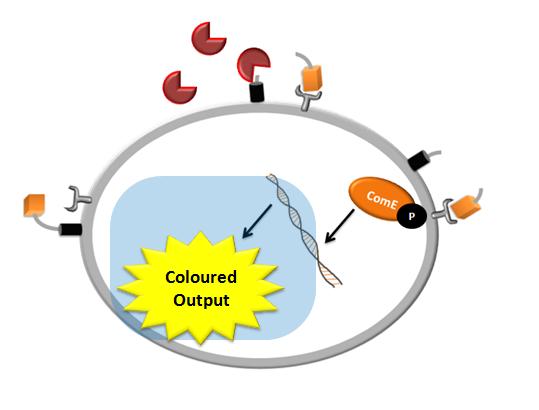Our novel concept of amplifying our output by incorporating enzymes raised some important questions that needed to be answered:
- How beneficial is it to incorporate the enzyme amplification step? We need to compare the speed of response between transcription and translation with 1-, 2- or 3-step amplification.
- How many amplification steps are beneficial? Will the addition of further amplification steps introduce considerable time delays?
- Which enzymes should be used for the 3rd amplifying step? TEV (which is the common enzyme for both 2- and 3-step amplification) or HIV1?
In order to answer these questions, we would have to model this system. The results of the computer models would enable us to decide which design would be the most efficient one. This design would then be put forward to be built in labs.

|
| The blue shadow indicates which part of the whole system the fast response model is simulating.
|
|
 "
"




